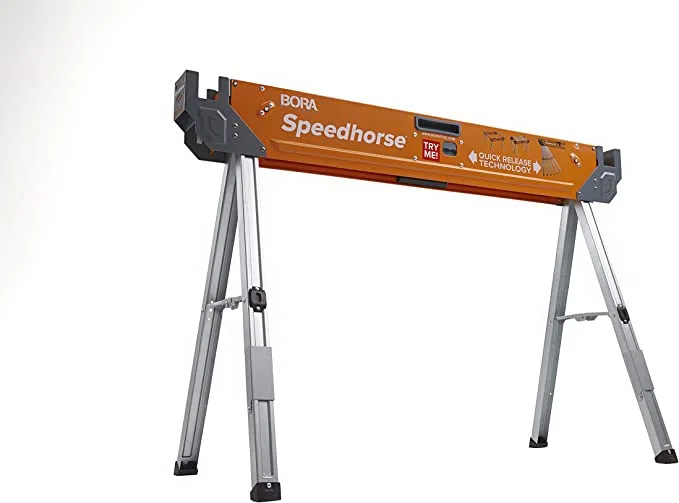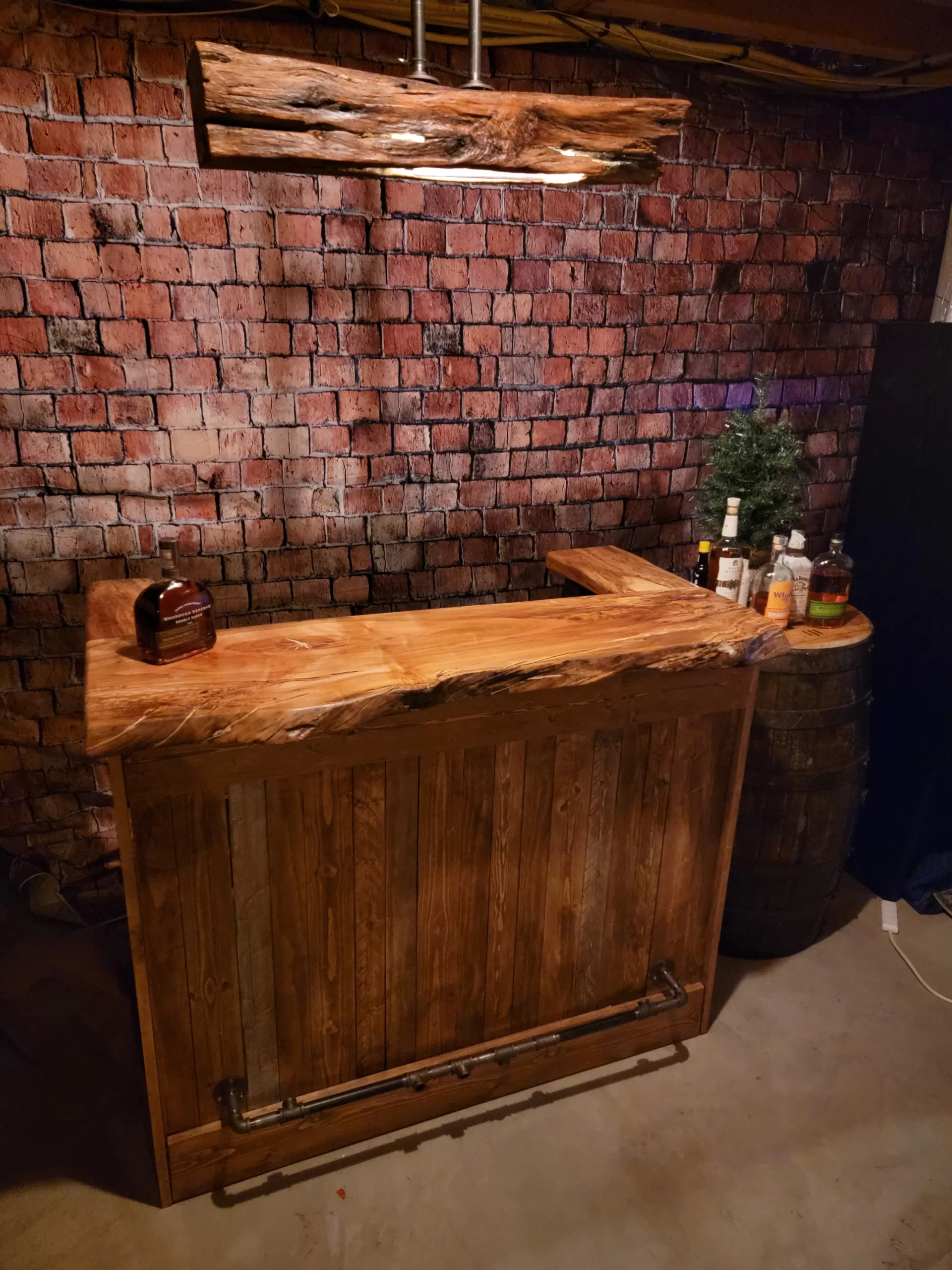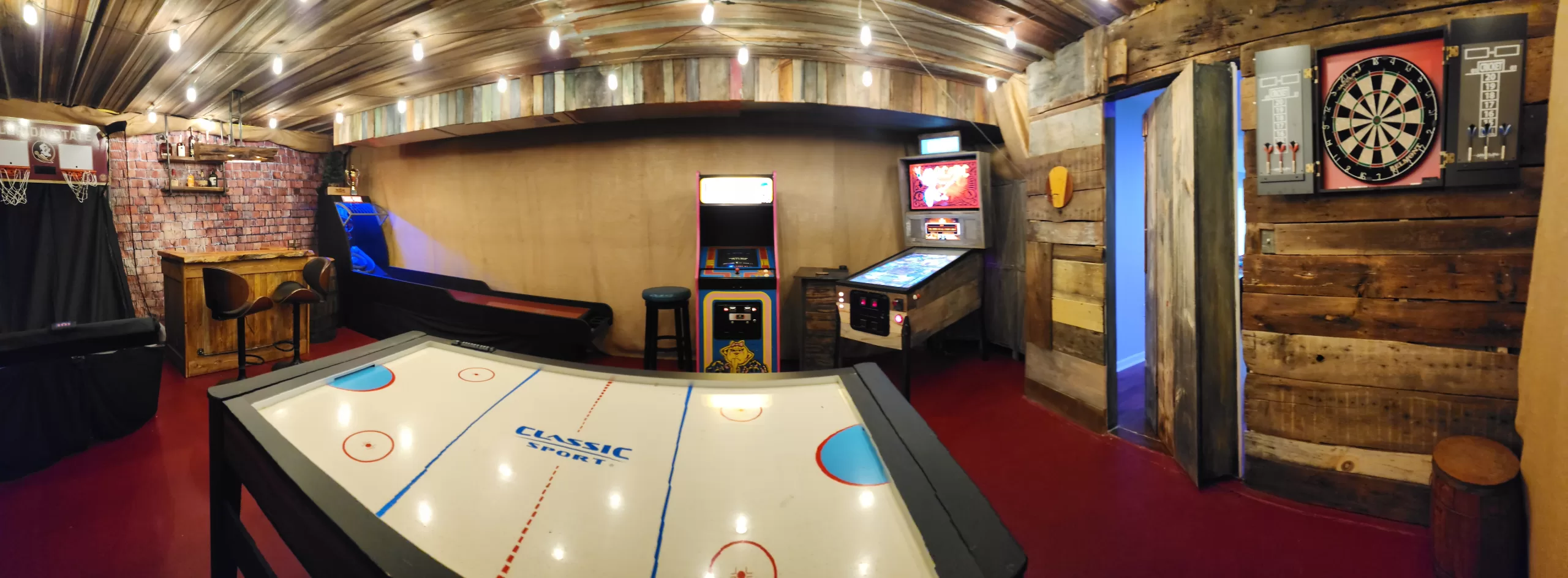Discover various sawhorse types, their uses, benefits, and tips for selecting the best sawhorse for your projects.
2023 Sawhorse Guide: Types, Uses, & Choosing the Perfect One

2023 Sawhorse Guide: Types, Uses, & Choosing the Perfect One
Introduction
A sawhorse is an indispensable tool for anyone working with wood, from professionals to DIY enthusiasts. They provide sturdy support for cutting, shaping, and assembling pieces. Choosing the right sawhorse can make all the difference in the quality of your work and the ease with which you can complete your projects. In this comprehensive guide, we will discuss the top 5 sawhorses available in 2023, breaking down their features, benefits, and specifications in detail.
Sawhorses come in various materials, sizes, and designs, with specific features that cater to different needs. Some common types include:
- Wooden sawhorses: Traditional and sturdy, wooden sawhorses are built to last. However, they can be heavier and less portable than other options.
- Metal sawhorses: These sawhorses are made from steel or aluminum, offering durability and strength. They are often foldable for easy storage and transport.
- Plastic sawhorses: Lightweight and affordable, plastic sawhorses are suitable for lighter tasks. However, they may not be as durable as wooden or metal options.
- Adjustable sawhorses: These sawhorses come with adjustable legs or supports, allowing for customization according to the user’s height and the size of the material being worked on.
- Folding sawhorses: Designed for portability, these sawhorses can be folded and easily transported to different locations.
- Sawhorse workbenches: These combine a sawhorse with a tabletop surface, providing additional workspace for various tasks.
2023 Sawhorse Guide: Types, Uses, & Choosing the Perfect One
Factors to Consider When Choosing a Sawhorse
When selecting a sawhorse, consider the following factors to ensure you make the right choice for your needs:
- Material: Consider the durability and weight of the sawhorse based on the material it is made of.
- Weight capacity: Ensure the sawhorse can support the weight of the materials and tools you will be using.
- Portability: If you need to transport your sawhorse frequently, opt for a foldable or lightweight option.
- Adjustability: Adjustable sawhorses are helpful for accommodating different heights and uneven surfaces.
- Additional features: Look for features such as built-in clamps, storage space, and workbench conversion options.
2023 Sawhorse Guide: Types, Uses, & Choosing the Perfect One
How to Properly Use and Maintain Your Sawhorse
Proper use and maintenance of your sawhorse can help extend its lifespan and ensure safe operation. Here are some tips for using and maintaining your sawhorse:
Always place your sawhorse on a stable, level surface before use.
Ensure that the sawhorse is set up securely and check that all locking mechanisms are engaged.
Distribute the weight of materials evenly across the sawhorse to prevent tipping or instability.
Do not exceed the weight capacity of your sawhorse, as this may cause damage or accidents.
Keep your sawhorse clean and free of debris to prevent damage to the material being worked on.
Inspect your sawhorse regularly for signs of wear or damage and replace any damaged parts as needed.
Store your sawhorse in a dry, protected area when not in use to prevent rust or other damage.
2023 Sawhorse Guide: Types, Uses, & Choosing the Perfect One
Additional Sawhorse Accessories
To enhance the functionality of your sawhorse, there are several accessories available that can be useful for a variety of projects. Here are some popular sawhorse accessories:
Sawhorse Brackets
Sawhorse brackets are a convenient and cost-effective option for those who prefer to build their own sawhorses. These brackets can be attached to 2×4 lumber, allowing you to customize the size and height of your sawhorse. Some brackets even come with adjustable features for added versatility.
Work Supports
Work supports are attachments that can be added to your sawhorse to create a larger work surface or support for specific materials. These attachments often include rollers or ball bearings, allowing materials to glide smoothly across the surface.
Miter Saw Stands
For those who use a miter saw frequently, a miter saw stand is a valuable accessory. These stands are designed to securely hold a miter saw, providing a stable work surface and increasing accuracy while cutting. Many miter saw stands are compatible with various sawhorse models and can be easily attached and detached.
Sawhorse Clamps
Sawhorse clamps are designed to secure materials to your sawhorse during cutting or other tasks. These clamps come in various styles and sizes, making it easy to find one that works well with your specific sawhorse model.
2023 Sawhorse Guide: Types, Uses, & Choosing the Perfect One
Safety Precautions When Using a Sawhorse
When using a sawhorse, it’s essential to follow safety precautions to prevent accidents and injuries. Here are some safety tips to keep in mind:
Wear appropriate personal protective equipment (PPE) such as safety glasses, gloves, and hearing protection when working with power tools and sawhorses.
Ensure that your workspace is well-lit and free from clutter or tripping hazards.
Use caution when cutting materials to avoid kickback or other hazards that could result in injury.
Keep children and pets away from your workspace to prevent accidents.
Follow the manufacturer’s guidelines for your specific sawhorse model to ensure proper use and maintenance.
2023 Sawhorse Guide: Types, Uses, & Choosing the Perfect One
Conclusion
Below is our top 5 sawhorse picks. These selections cater to various needs, from casual DIY enthusiasts to professional carpenters, and prioritize portability, durability, and overall value.
| Rank | Sawhorse | Weight Capacity | Material | Foldable | Price Range | Amazon Link |
|---|---|---|---|---|---|---|
| 1 | ToughBuilt TB-C700 Sawhorse | 1300 lbs | Steel | Yes | $$$ | Check price on Amazon |
| 2 | Stanley FatMax Sawhorse | 1000 lbs | Plastic | Yes | $$ | Check price on Amazon |
| 3 | WORX Pegasus WX051 Worktable | 1000 lbs | Plastic | Yes | $$ | Check price on Amazon |
| 4 | DEWALT DWX725B Heavy-Duty Work Stand | 1000 lbs | Aluminum | Yes | $$$ | Check price on Amazon |
| 5 | KETER Folding Compact Workbench | 1000 lbs | Resin | Yes | $$ | Check price on Amazon |
| Honorable Mention | Bora Portamate PM-3300T Sawhorse | 500 lbs | Steel | Yes | $ | Check price on Amazon |
Our Verdict: ToughBuilt TB-C700 Sawhorse emerges as the top pick, offering robust construction and versatility for various applications. Its higher price tag reflects the quality and features it provides. For users seeking a more budget-friendly option, Stanley FatMax Sawhorse is an excellent choice, offering durability and functionality at a lower price point. To make an informed decision, consider your specific needs, budget, and work environment. Regardless of your choice, always prioritize safety and follow the tips and recommendations provided to ensure the most efficient and productive use of your sawhorse.
2023 Sawhorse Guide: Types, Uses, & Choosing the Perfect One
FAQ
1. Question: Can I use a sawhorse as a workbench?
Answer: Yes, many people use sawhorses as makeshift workbenches by placing a sheet of plywood or a similar flat surface on top of a pair of sawhorses. This setup provides a temporary and portable workspace suitable for various tasks. However, keep in mind that a dedicated workbench may offer additional features, such as built-in storage and specialized clamping systems, which can be beneficial for certain projects. However, sawhorses are a great portable solution – especially for those who are space constrained.
2. Question: Can I build my own sawhorse?
Answer: Absolutely! Many DIY enthusiasts and professionals build their own sawhorses to suit their specific needs and preferences. There are numerous plans and tutorials available online for constructing sawhorses from wood or metal, with varying levels of complexity and customization.
3. Question: How do I choose the right sawhorse height?
Answer: Choosing the right sawhorse height depends on your personal height and the tasks you plan to perform. A comfortable sawhorse height allows you to work without excessive bending or reaching. Typically, a sawhorse height between 28 and 36 inches is suitable for most users, but adjustable sawhorses offer the flexibility to adapt to different tasks and user heights.
4. Question: How can I make my sawhorse more stable?
Answer: To enhance the stability of your sawhorse, make sure to set it up on a flat, level surface. You can also add non-slip pads or rubber feet to the bottom of the legs to prevent the sawhorse from sliding on smooth surfaces. Additionally, using diagonal bracing on the legs can help to reduce lateral movement and increase overall stability.
5. Question: How do I store my sawhorse when not in use?
Answer: Proper storage is essential for preserving the condition and functionality of your sawhorse. If possible, store your sawhorse in a dry, cool area, such as a garage or workshop, to protect it from moisture and temperature fluctuations. For foldable or collapsible sawhorses, ensure that they are folded correctly and stored in a manner that prevents damage to the legs or supports.
By considering the wide variety of sawhorses available and understanding their unique features, you can make an informed decision when selecting the best sawhorse for your needs. Whether you choose a folding, portable, adjustable, or log sawhorse, investing in a high-quality and reliable sawhorse will enhance your productivity and ensure your projects are completed safely and efficiently.
6. Question: What is the ideal height for a sawhorse?
Answer: The ideal height for a sawhorse varies depending on the user and the specific task being performed. Generally, a height of 28 to 32 inches is considered comfortable for most individuals. However, it’s essential to choose a sawhorse that allows you to work comfortably and maintain proper posture to avoid strain and injury. Some sawhorses are adjustable, allowing you to customize the height to suit your needs.
7. Question: Can I build my own sawhorse?
Answer: Yes, building your own sawhorse can be a cost-effective and satisfying DIY project. You can find numerous plans and instructions online for building a sawhorse using readily available materials such as wood or metal. When constructing your own sawhorse, ensure that you use high-quality materials and follow all safety guidelines and precautions to create a stable and reliable work support.
8. Question: How many sawhorses do I need for my projects?
Answer: The number of sawhorses you’ll need will depend on the specific tasks you plan to perform. For most projects, two sawhorses are sufficient to create a stable work surface or support for cutting, painting, or assembling materials. However, larger or more complex projects may require additional sawhorses to provide adequate support and stability. Consider your project requirements and workspace limitations when determining how many sawhorses you’ll need.



